He was 4 when he was first exposed to the moving image courtesy of a sheet hanging on the side of an airfield in Libya (his father was in the Royal Air Force). Though it was a few years later that film officially took root in Brian Trenchard-Smith, this experience speaks volumes to who he would become as a filmmaker. His films are full of action, mischief, adventure, and comedy. Though they are right at home projected in the cozy confines of a theatre, the true Trenchard-Smith experience is best served outside, sitting in a car or on a hill, observing the mayhem on a drive-in screen as the film colors the night with the glow of explosions and gunfire.
One of Quentin Tarantino´s favorite directors, he is a humble and self deprecating man, full of anecdotes and film history. Trenchard-Smith was first on my personal radar when BMX BANDITS played on a loop on HBO as a child, it wasn’t until a few years later that I discovered the impressive output of films; STUNT ROCK, THE MAN FROM HONG KONG, DEAD END DRIVE-IN, THE SIEGE OF FIREBASE GLORIA and more. Over 40 crimes against cinema as he would say. If his films are a crime, then toss me in the clink because I am guilty on all counts.
The man himself was kind enough to jump on the phone with us before he was scheduled to be filmed for yet another documentary (this one, fittingly, on drive-in culture). Dig it, Bastards.

DAILY GRINDHOUSE: You were born in England and made your first film at 15 which was a Super 8 film. When did you first discover how powerful cinema could be and was there one film in particular that stands out to you as one that shaped your opinion of films in general?
BRIAN TRENCHARD-SMITH: It was Alfred Hitchcock’s VERTIGO. I had first been exposed to the moving image in Libya at the age of 4 when I suspect it was a western that was projected on a sheet hung near some benches on the side of the airfield. Those were the movies that came to my father’s air force base in those days. That was my first contact with the moving image and we didn’t get television until I was about 9. When I was 13 I was allowed to walk by myself at night through the graveyard, past the slaughterhouse and the police station – the English village of Odiham could have belonged in a Midsommer Murders episode – to the Regal, the local Cinema.
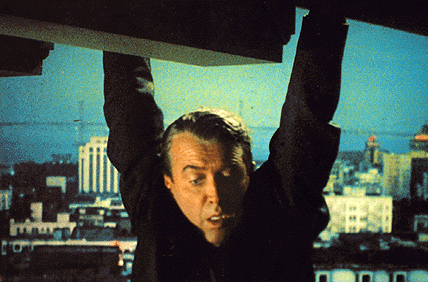
So then I went to VERTIGO curiously double-billed with FOUR GUNS TO THE BORDER, a Rory Calhoun western. VERTIGO had not done well in England and this was on its re-issue. I was mesmerized by it, seeing it all by myself in a relatively deserted theatre. I didn’t understand the dark undercurrents in the film but I got to appreciate Hitchcock’s touches later. Something happened to me then, the light bulb went off over my head. I knew when I turned 18 in five years’ time I would have to do what grown-ups did which was work for a living and come home on Friday with money in my pocket. Suddenly I realized that people got paid to make movies. That was how the dream was formed. I have been lucky to be in the right place at the right time. There were other directors as well that I admired; the work of John Ford, the controlled and elegant staging of Anthony Mann western; Henry Hathaway, who knew how to photograph an action scene and how to get characters to speak off each other, Gordon Douglas, Don Siegel, Robert Aldrich, Kubrick’s Spartacus and Wyler’s Ben Hur made me want to make epics.
You eventually made your way to Australia and worked in television for a while before moving to features.
Just before I turned 20 I took a ship to Australia where there was 3 commercial channels and one government channel like the BBC and a tiny amount of local drama; a couple of police shows, one fairly abominable attempt to make a spy drama, and that was where I landed and I was, again, in the right place at the right time. I barged into a TV station and presented a reference on a UK company letterhead for whom I had briefly worked as the worst clapper/loader they ever engaged, which of course I had forged. It said I was the greatest thing since sliced bread, and they said they were looking for a news film editor and asked if I had any editing experience. I said “oh yes, yes, yes”. I was referring to my 8mm films. So if you had the gift of gab and confidence in those days, you were given a shot. You had to deliver but within 5 days I knew what I needed to know about cutting news.

Within a year I became the top editor and moved into station promos because I said “your promos are dull, I could make them more exciting” which meant emphasizing the sex and violence. Another network – Channel Nine – stole me and I did the new season launch for them in 1968 launching American shows in Australia like: STAR TREK, JUDGE FOR THE DEFENSE, IRONSIDE, TIME TUNNEL. The network won the ratings and they were grateful so when I decided to roam the world and learn more and they gave me a reel of things I had made. I had a 16mm kinescope of some of my more audacious promos. I talked my way into TV stations in Japan, Hawaii, and all over America. In the US I met executives at National Screen Service who made trailers all over the world and they had a British subsidiary. They looked at my promos and told me to go see my London office so I became their junior writer and producer for NSS. I made a bunch of trailers for the lower level films, the Hammer Horrors – FRANKENSTEIN MUST BE DESTROYED, THE VAMPIRE LOVERS, – spaghetti westerns including ONCE UPON A TIME IN THE WEST and so forth.
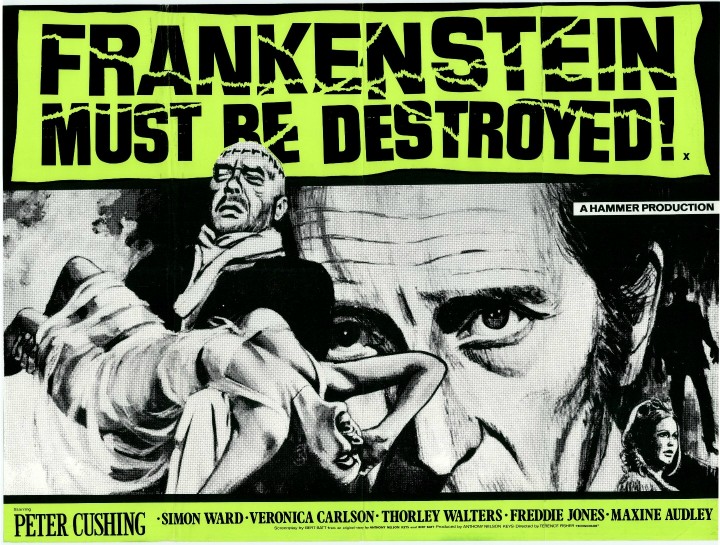
The Australians called me and asked me to come back and I said if you allowed me to make programs in addition to promos, yes. They flew me back and I worked for them for a few years during which I produced and directed a few variety, beauty pageant and documentary TV Specials. In 1972 I formed my own company and made a 50 minute 16mm color dramatized documentary called THE STUNT MEN about how stunt men do their stunts, which you can find on the DVD of STUNT ROCK. I sold it across the world in 1973. That was sufficient enough to give me a respectable calling card to the next level.
You came up with an idea for a film that was going to star Bruce Lee, at least you were anticipating his interest.
I wrote a story for Bruce called YELLOW PERIL, my Asian partners didn’t see the ironic humor in that but… I pitched an idea of a Chinese DIRTY HARRY coming to Australia. He exceeds his orders, as action heroes are wont to do and wrecks the place. I had arranged to make a documentary about him and I was going to use that to pitch the movie to him but that did not come to pass, because while I was in flight to Hong Kong with my camera crew, Bruce tragically died. So I made a tribute to him called THE WORLD OF KUNG FU and then a follow-up called KUNG FU KILLERS which you can find on THE MAN FROM HONG KONG DVD in Australia.
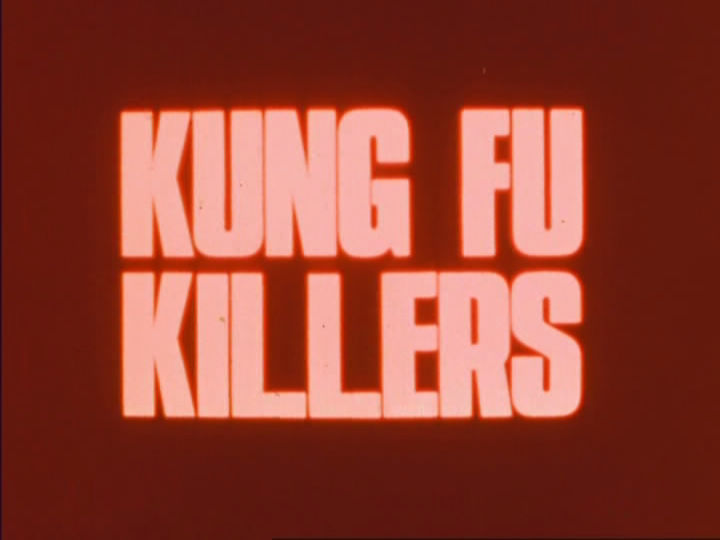
I had developed a good relationship with Raymond Chow and he agreed to back YELLOW PERIL . I told him that I had people in Australia that would back half of it and he said he would do the other half. Then I went to Australia and told them that I had a guy in Hong Kong that could back half if they would. So with a title change to THE MAN FROM HONG KONG, my first feature was born and it was successful, though the sense of humor of the piece was not fully grasped at the time but it has lead to 40 more crimes against cinema.
When you learned of his death, what was going through your head?
Well I had committed the budget at that point; bought the airfares, hired the cameraman, the only thing I hadn’t paid for at that point was the post production. So, when the plane touched down in Jakarta airport for 45 minutes for refueling, there was a big newspaper heading that said “Bruce Lee Dies”. That was a major “oh shit” moment at the time. Obviously poor Bruce, his poor wife and children, poor Raymond Chow with whom he was a 50% partner with an unfinished film in the can with only 11 minutes of useable footage. Did I think I was ruined? No, when you’re 27 you think you can conquer the world. It was very sad but the interest in Bruce Lee was not going to diminish, I made a tribute to him and away we go. I bought some footage of the funeral and interviewed Raymond and his competitor Run Run Shaw, had little clips from Bruce’s films and so forth. Luckily, that lead to MAN FROM HONG KONG which still holds up today.
The fighting and the staging of the fighting was very much in tune with the period and Wu Xu films would rise to another level in Hong Kong with Jackie Chan and become more comedic and they hit another level with Jet Li which had great athletic ability and a more harder and brutal edge. Now the bar has been lifted even higher with THE RAID: REDEMPTION.
Oh it’s a game changer.
It is, how can Hollywood compete with that? When you can see it’s all real. A little bit of CG but the actual fights in the corridors and the rooms, these guys are really doing it and receiving contact. Obviously light contact but one man’s light contact is another’s knock-out.
You know what’s interesting is if you look at the films of Donnie Yen and Tony Jaa, those films were cool to watch but it was like the genre had plateaued a little bit but then here comes THE RAID which is a jaw-dropper, you feel every single hit and contact they make in that film. It is really remarkable.
It’s extraordinary. How can anyone out stage that? They’re doing a sequel, so the director will be facing a challenge with how to top it. It’s going to be interesting to see what he does.

So if we back up a little bit; you get some financing from Raymond Chow, THE MAN FROM HONG KONG is your first feature starring Jimmy Wang Yu who is a really colorful character and had a pretty great career until the mid 80s or so when his films started to almost mock themselves and his personal demons caught up with him. There are a lot of stories, true or not, about him being difficult to work with, doing things like trying to seize control of the production and such. Can you tell us what it was like working with him on set?
Well, it certainly was a challenge; I was throwing myself in the deep end because he was a Golden Harvest star and directed 8 of his own films. Naturally this was my first big film, first thing in 35mm and scope, and I had my particular way of working which wasn’t his. There was a certain clash on that basis. He thought I was an inexperienced idiot, and did not get my sense of humor and he wanted to throw his weight around occasionally but I can understand his point of view though. There he was in a foreign country, he didn’t really speak the English very well; of course we had been told that he spoke perfect English. Before production I kept asking Raymond if I could speak to him and he would say “he’s in Taiwan” and I would ask if he had a phone and he would say “no, he’s hunting bears in the mountains.”
That’s always my excuse for everything by the way.
Yeah I should use that sometime. Sammo Hung, who was getting his first major fight choreographer credit in addition to being in the film, was fantastic. When it came to things like the kitchen fight we looked at that kitchen together – I had written every evil instrument and nasty piece of cutlery was to be used in the fight. We looked around and saw the cleaver and I’d say” the hanging hooks are good and the frying pan we could use to smack someone in the head” so I would layout the broad generalities of it and they [Hung and Wang Yu] would choreograph it. Then I would work with Russell Boyd [cinematographer] to photograph it from the right angle but it was a little tense. I would take my time in setting things because I wanted it to be right, this was before video-split and things like that, director’s aids. Jimmy was used to making films for $80,000 and doing them very fast. I was methodical, taking time to put in jokes which he didn’t understand. I do understand his position though. When you get to be a star you’re concerned with not making a fool of yourself on the screen, and here they are in another country, not speaking the language very well, in the hands of a novice director.
Eventually when I went back to Hong Kong and he had seen my unmixed cut of the film he kind of apologized for the way he behaved and that was fine. We never had a reason to speak since but I am sure he is a very nice guy. I think he’s primarily a business man now. I hope we meet again one day. I learned a lot from my mistakes and the whole experience on THE MAN FROM HONG KONG. As the Chinese say “what doesn’t kill you makes you stronger.” If you see my Trailer From Hell on THE MAN FROM HONG KONG you’ll see a picture of my protector and mentor; the executive of the Australian Distribution Company John Fraser who covered my back the entire time. When there were complaints about how slow or indecisive I was he said he had faith me in and refused to make changes. Everything worked out and in the end my cut of the film went international and Jimmy’s cut was shown only in Asia.
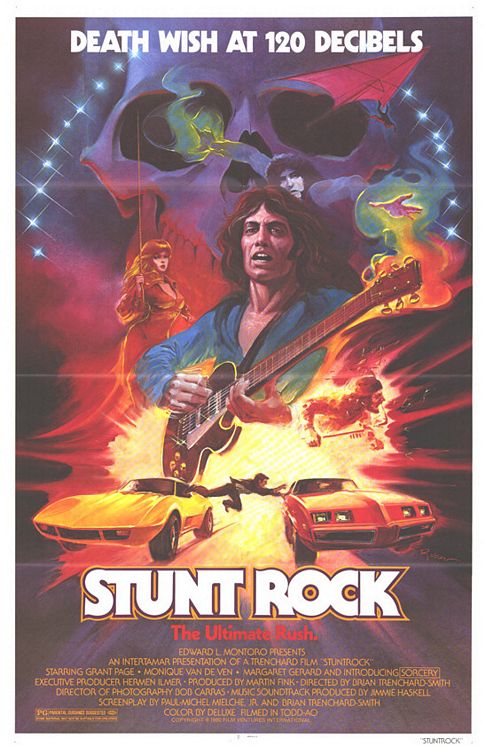
Your next two films DEATH CHEATERS and STUNT ROCK both collectively known as the greatest titles in the history of cinema…
[laughs] Indeed. Well there was another title for DEATH CHEATERS, I originally conceived it as CUNNING STUNTS but people were afraid of an unfortunate spoonerism.
Understood.
I did manage to sneak it in though on the t-shirts of the stars Grant Page and John Hargreaves. They called their stunt company Cunning Stunts. Say that three times fast! I thought it was a hilarious title but my distributor didn’t quite share my sense of humor.
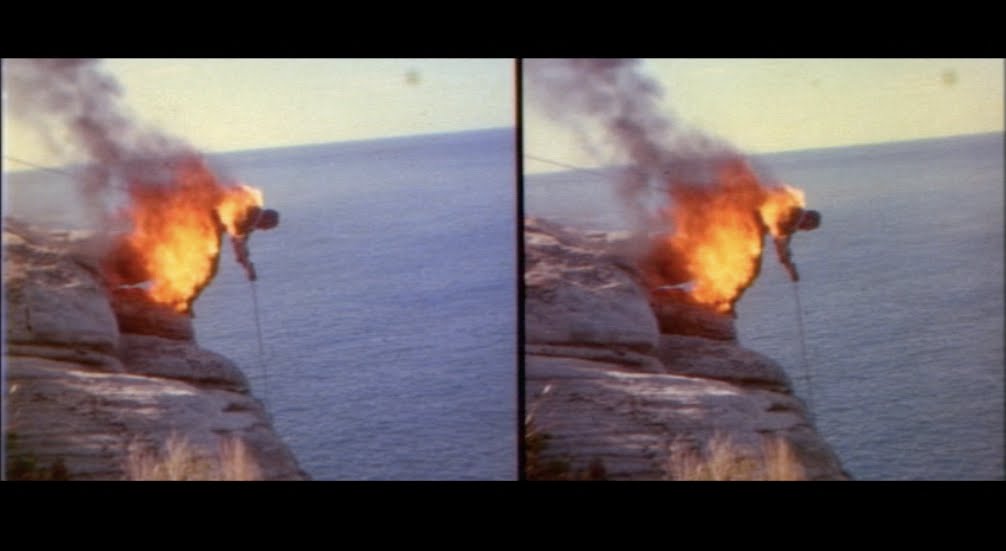
Both of those films are kind of Grant Page set pieces and you continued to work with him throughout your career. When you shoot him there is always this genuine sense of curiosity combined with love and respect for one another. Why have you stayed so close with him? That’s a really interesting relationship that you don’t see very often.
No you don’t. Grant had many careers prior to being a stunt person. He was in a National Guard division that did a lot of underwater training and cliff jumping and that’s where he picked up his skill in addition to being a daredevil kid. He had been a fisherman, an insurance salesman, a wide variety of activities but what he enjoyed most was getting an adrenaline rush in overcoming a challenge of some kind. I recognized his abilities the moment I saw him at work when he did the rope slide in THE STUNT MEN so I put him under a 5 year contract of management and promised him that I would get his name above a title in 5 years. I thought he had an engaging personality that should be seen on-screen and not just doubling people and setting fire to his pants so that was the plan. I put him in KUNG FU KILLERS, DANGER FREAKS, THE MAN FROM HONG KONG, DEATH CHEATERS, STUNT ROCK, each was meant to build his profile a little more. STUNT ROCK was meant to push him to an international level which it succeeded in doing more or less. He did the Shelly Winters full burn in CITY ON FIRE and he did DEATH SHIP and films in Africa so he got launched and that was good. The relationship we had I think comes out of the fact that we complement each other’s missing parts so to speak. I was a bit of a devout coward who went to English public school where people worshipped rugby and I wasn’t the greatest rugger-bugger in the world. I preferred a weapon in my hand like a hockey stick; that’s how I lost my two front teeth. I had an overly protective mother, bless her; I was an only child. I was always impressed by people who could do amazing things and that was part of my attraction to stunt men who carefully worked out their daring-do. They’re the unsung heroes of the movie business. I had this admiration for people who made action look good and I wanted to direct action, Grant had all those abilities and we just complimented each other well. We hung out a lot and shared girlfriends which is to say he passed them down to me; it was never the other way around.
You could do a lot worse it sounds like?
You could do a lot worse. I am afraid we may be offending your female listeners and readers.
Oh no way, we are all equal offenders.
Who is this sexist pig! But yes, Grant is terrific. I was there when Grant at age 70 set his pants on fire at the premiere of NOT QUITE HOLLYWOOD and shook hands with a rather astonished Geoffrey Rush while he was on fire. Grant is a remarkable human being and a great example of classic Australian “have a go mate, she’ll be right” attitude, something uniquely Australian about his approach to life.
STUNT ROCK is to this day an incredibly unique film; both in the way it employs split-screen and just the general concept for the film.
The idea for STUNT ROCK came to me in the shower and I immediately wrote six pages and it was immediately funded. Extraordinarily lucky. That never happens. It is comprised of great editing; Earl Watson who has had a long career, Robert Leightont who edited all of Rob Reiner’s movies and a few others. There were some really great people on that film.
You were originally promised KISS and then FORIEGNER was going to do it but a tour got in the way.
I flew to New York and they were intrigued by my six page treatment but they wanted to wait until their tour was over but my deal with the financiers demanded I complete it sooner. I got SORCERY though and really they provided visual elements that FORIEGNER wouldn’t have provided. VIRGIN was also interested and I looked at their material and SORCEREY’s material and thought that SORCERY was it. The stuff that SORCEREY was doing had been declared illegal by the fire marshal; things like firing propane out of their fingertips but I was glad to have immortalized their act. The magic half left the band not too long after the film was released. The rest of the band is strictly musicians and good ones at that. They were fun guys and great to work with.
I mentioned your use of split-screen in this film. It has a way of almost inserting the viewer into the stunts of Grant but also giving them a real sense of danger and suspense. Split screen was used before in CARRIE, WOODSTOCK and AIRPORT but I think this is the first real action film to employ that.
I am unaware of anyone using it the way we did. There were a number of reasons why we did that. I wanted to fill the cinemascope frame. I had a lot of 16mm ektachrome reversal material that I had shot for DANGER FREAKS, my TV series about Grant and his stunts; building once again on THE STUNT MEN. I picked the eye teeth out of them . Some shots we did succeed in blowing up to 35mil. During pre-production I created a lot of the split screens before the shoot, knowing I would edit them into different sequences. I certainly did want to give the audience a visual approach to the action that they hadn’t seen before which was interesting. There is one shot where a car comes out of a big storm drain; if you take the same shot and swap it and put it in two side-by-side panels, the same car peels off the left and the right which is interesting with the right kind of sound and music behind it. I was experimenting with that sort of visual riffing.
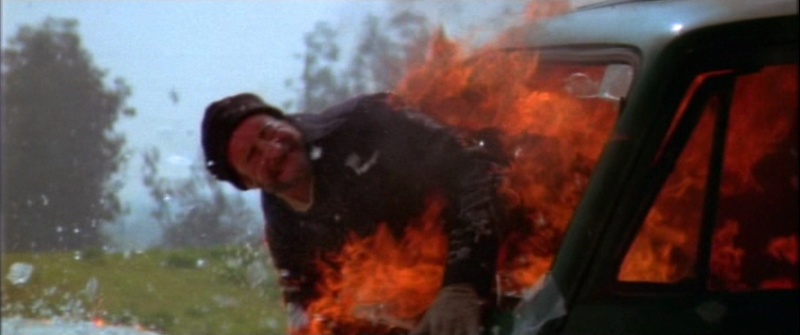
One of my favorite shots in STUNT ROCK is the scene where he goes flying out of the window of the van while on fire. Are there moments or stunts in that film that you particularly admire?
Yes, that is a great moment. We shot that on this abandoned freeway that was made available to us that day. This was the ultimate version of “man on fire through the windshield”. I wanted to do it on a more grand scale and have the camera right underneath the windshield as he bursts through and showers the lens with shards of glass and a tongues of flames reaching out. I thought that would be a really stunning visual. Sometimes you can see the shot and what drives the rest of the sequence and you write things around it to be able to create that shot. I would say that is a fairly stunning moment. It is more character based in the format of the film in so far as the other characters watching with concern as opposed to the stunts in split screen where they just become musical montages. I think when Sorcery do The Sword and the Sorcerer, it looks like the sword is passing through the Wizard’s body. For its day that was a nice moment from the audience point of view in the concert section of the film. It’s hard to say what my favorite sequence is, maybe the catapult scene in the start; I shot that for DANGER FREAKS back in 1975 but I knew one day I would want to have that on 35mm so I got Russell Boyd to shoot 35mil angles so that I would have that available for a sequence for a film I hadn’t thought of yet.
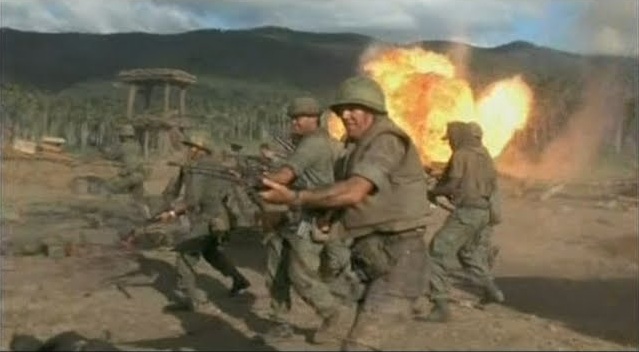
Let’s talk about SEIGE OF FIREBASE GLORIA. I think TURKEY SHOOT demonstrated your ability to shoot a war film and I think a lot of directors approach that genre thinking it’s easier than it is despite Coppola showing us otherwise. SEIEGE has developed a really tremendous following; it’s loved by film goers and service men and women. I know you have heard the stories of this film playing on VHS in war zones. I think one could argue it is one of your more appreciated films. This looks and sounds like a fairly difficult production; you have a pretty rough environment, a tough genre, and some other peripheral problems.
It was very difficult. We had collapsing cash flow issues to throw a wrinkle into the proceedings. I was sometimes facing a crew that hadn’t been paid for a couple of weeks. At one point the entire stunt unit literally downed tools and said they had to have money to feed their families or they couldn’t continue. They told me they would love to continue to go on working but they reached a point of needing to see compensation. Luckily I applied the industrial cattle prod to one of the producers and he went around to the local race track where he found some rich friends of his and found some money and came back with cash. Speaking to your point though, it was a difficult shoot. There were safety issues with explosion and blanks firing, language barriers, things that get lost in translation when working with a foreign crew, and of course the trouble of making a war movie in a war zone.
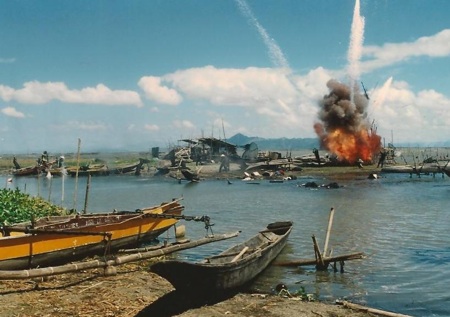
We had to negotiate with the “good people” who were the NPA – we were told which was a line item in every Philippine budget. We had to hire the “good people” as our security guards. They were very honorable members of the New People’s Army. They only gave us a little bit of a warning when we failed to pay them. I had left my second unit director behind and they said “he should not step out of his hotel until we are paid.” The next day they were paid and it was fine. There are things like that which can enliven the filmmaking experience. Things like going to pick the site of the firebase with your first AD and your production designer. I eventually became aware that my first AD was armed and a truck comes up. Inside the truck are two armed men with bandanas covering their face and I watch as my colleagues negotiate the price of the “good people” and what they will do and so forth. What they required was a warning when the army was coming who was providing us helicopters. They didn’t want to be surprised by the army and the army didn’t want to be surprised by them. Nobody wanted to fight unless they had to. One day we said to them that the army is coming at 9.00 and they will be with us for half the day. 9:00 came and the army didn’t arrive. Finally at about noon they showed up and the general said as he stepped out of his helicopter “sorry we’re late but we were busy bombing the NPA, we will now change our ammunition to blanks.” Good idea, I thought. The Philippines could be the Wild East at times.
One of the reasons people love your films so much is that while I think you have a consistent style, you never really stay in one genre, outside of the LEPRECHAUN films. You’re always moving around and exploring. Do you enjoy the challenge? Is that why you jump around?
Spielberg said something about we all try to make the films we loved as a child and I am no exception. I didn’t just fall in love with one genre, I am of course very fond of epic adventure and when I was 12, HERCULES UNCHAINED came out along with all these sword and sandal Italian movies that would play the second half of a double bill and there were the big Hollywood epics, the Samuel Bronston films like EL SID, FALL OF A ROMAN EMPIRE, 55 DAYS AT PEKING which I referenced in MAN FROM HONG KONG, all of those films had a great impact on me. I wanted to make film like that. Unfortunately I never got the opportunity to do that other than the epic battle scenes of SEIGE OF FIREBASE GLORIA, SAHARA, and OMEGA CODE 2. I never had the chance or the money to do the kind of intense battle scenes that are in the back of my head. I love thrillers, action, horror and horror comedy, I am not too keen on torture porn, but a good fright, a good shock, and I enjoy that. I enjoy genre cocktails; OMEGA CODE 2 is THE OMEN meets AIR FORCE ONE in THE END OF DAYS and they fight THE BATTLE OF THE BULGE, that’s four movies in one, even before you get to the second coming. I have fun doing things like that. In a film like SAHARA – the remake of the 1943 Bogart movie – I took it seriously. I did that film as a tribute to my father’s generation. He was a World War II fighter pilot; they had a great sense of duty and fought in perhaps the only necessary war in the last century. So, there are times I play it straight, other times I am just dealing with the difficulties of making a film on a budget.
________
Trenchard-Smith has become one of the most popular “Gurus” on Joe Dante’s Trailersfromhell.com. In his commentary track for THE 7TH VOYAGE OF SINBAD, Trenchard-Smith talks about how Harryhausen’s producing partner Charles Schneer was known to be able to make grand spectacles with limited budget; the same could be said for Trenchard-Smith. A true ozploitation legend.
You can follow Brian Trenchard-Smith on Facebook here
and catch him on Trailers From Hell here.
SEE YOU ON FORTY DEUCE,
G
- [THE BIG QUESTION] WHAT’S YOUR FAVORITE FEMALE ENSEMBLE IN MOVIES? - July 22, 2016
- [IN THEATERS NOW] THE BOY (2016) - January 24, 2016
- Cult Movie Mania Releases Lucio Fulci Limited Edition VHS Sets - January 5, 2016

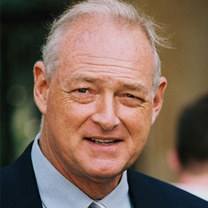




Great interview with an interesting cat. I’d love to knock back a few cold ones and hear some more of his behind the scenes stories.